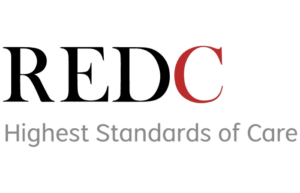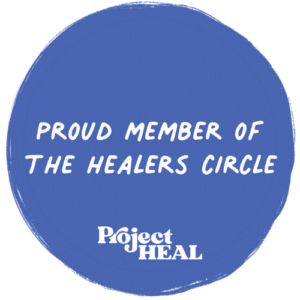In the conversation about the health and well-being of teens, one topic that deserves attention is disordered eating. Eating disorders can negatively affect every part of a person’s life, from their mental and physical health to their relationships with loved ones. An eating disorder is a severe and sometimes life-threatening mental health condition, and every teen and parent should be aware of the warning signs, symptoms, and treatment options.
Common Eating Disorders in Teens
Eating disorders are the third most common chronic condition among adolescents, and as many as 13% of teens will develop an eating disorder by the time they reach 20 years of age (1). The most common types of eating disorders in teens include anorexia nervosa, bulimia nervosa, and binge eating disorder.
- Anorexia nervosa is characterized by excessively low body weight, an intense fear of gaining weight, and a distorted body image. This disorder involves severe restriction of food intake and may include episodes of bingeing and purging and extreme exercise to offset calorie consumption. Anorexia has one of the highest mortality rates of all psychiatric illnesses and affects 0.3%-0.6% of adolescents (1).
- Bulimia nervosa is characterized by recurring episodes of binge eating followed by compensatory behaviors, such as self-induced vomiting, laxative use, fasting, or excessive exercise, which are used to avoid weight gain that results from bingeing. Bulimia affects 0.9% of adolescents (1).
- Binge-eating disorder (BED) involves episodes of compulsive overeating in which an individual eats abnormally large amounts of food very quickly and feels like they cannot stop. As many as 1.6% of adolescents suffer from binge-eating disorder (1).
Any signs of disordered eating, unusual eating behaviors, or an unhealthy relationship with food are cause for concern and shouldn’t be ignored. When you look at the percentage of teens that have subthreshold eating disorders, the amount of teens affected by disordered eating increases significantly. Subthreshold means an individual has symptoms of an eating disorder but does not meet all the criteria to be formally diagnosed. For example, 0.9% of teens are diagnosed with bulimia, but 6.1% suffer from subthreshold bulimia (1).
It’s crucial to recognize that even if a teen doesn’t meet the criteria to be diagnosed with an eating disorder, they may still show signs of disordered eating. This is a critical time to intervene. Early intervention is vital in preventing an eating disorder from becoming severe enough to cause serious psychological and physical consequences. It also provides the best chance of long-term recovery.
What is the Most Common Eating Disorder in Teens?
Studies show binge-eating disorder is the most common eating disorder among both adults and teens. BED isn’t discussed as much as other eating disorders like anorexia and bulimia. In fact, it wasn’t recognized as a diagnosable eating disorder until 2013. However, it makes up almost half of all eating disorder diagnoses (2) and is three times more common than anorexia and bulimia combined (3).
Recognizing the Signs of an Eating Disorder in Your Teenager
Eating disorders can be challenging to spot, especially in their early stages. However, there are some key warning signs to look for. It’s important to remember that teens often become more private as they get older and seek independence, so it’s not unusual for those suffering from an eating disorder to conceal their behaviors and feelings from their loved ones.
Any number of symptoms may be present in your teen. Regardless of which eating disorder they have, the warning signs will likely involve their eating habits and behaviors relating to food.
Common signs that your teen may be hiding an eating disorder include the following:
- Extreme weight loss
- Fixation on appearance and weight
- Skipping meals
- Restricting certain types of foods
- Avoiding gatherings that involve food
- Excessive chewing, over-cutting, or over-preparing food at meals
- Calorie counting
- Isolating oneself from friends and family
- Eating in secret
- Frequently body checking
- Over-exercising
- Overeating
- Going to the bathroom during or right after meals
- Evidence of laxative or diet pill use
- Calluses on the knuckles from self-induced vomiting
- Dental problems such as enamel loss and tooth decay
- Swollen salivary glands
- Gastrointestinal issues like abdominal pain and constipation
- Dry, itchy skin and brittle nails
- Hair loss (from the head) or fine hair growth (over the body, a condition known as Lanugo)
- Brain fog and difficulty concentrating
- Dizziness, weakness, or fainting (4)
Consequences of Teen Eating Disorders
There are psychological and physical consequences of adolescent eating disorders. Both can be devastating to one’s health and well-being and may even be fatal.
On the psychological side, feelings associated with eating disorders, such as guilt, shame, and self-loathing, are prevalent. These feelings can be overwhelming and lead to increased anxiety and depression. Judgment and decision-making may become impaired, and teens may turn to risky behaviors like self-harm. They are also at higher risk for suicide.
The physical consequences are just as severe. Without proper treatment, eating disorders often lead to issues such as electrolyte imbalances and dehydration, which can result in low blood pressure, arrhythmias, heart failure, and kidney problems. Long-term gastrointestinal issues, such as chronic constipation, esophageal erosion, or even esophageal rupture, can also occur. Additionally, there’s a risk of developing irreversible conditions like osteoporosis and organ failure (5).
Parental Support: Helping Your Teen Overcome an Eating Disorder
Although it may not be easy, it’s essential to talk to your teen if you suspect they’re struggling with an eating disorder. One of the best ways you can help is by expressing your concerns in a calm, understanding way and by letting your teen know you’re there for them. Keep in mind that they are likely grappling with feelings of low self-esteem, guilt, and shame, so it’s important to avoid blame and judgment. A strong support system is crucial to their recovery, and your support will be essential to them during their journey.
Since professional treatment is the best course of action, emphasize your willingness to explore treatment options together. Treatment options for teens include inpatient, residential, partial hospitalization, and outpatient programs. The best treatment option for your teen will depend on the severity of their eating disorder and their individual needs.
It isn’t easy to navigate those first steps toward recovery, whether it’s for your own journey or your teen’s. At Aster Springs, our team of professionals can provide the guidance and support you need to make the best decision regarding your unique treatment needs. Take the first step today, and contact the Aster Springs team at 804-203-9015.
References
- Rienecke, R. D. (2017). Family-based treatment of eating disorders in adolescents: Current insights. Adolescent Health, Medicine and Therapeutics, 8, 69-79. https://doi.org/10.2147/AHMT.S115775
- Cleveland Clinic. (2023, April 17). Binge eating disorder. https://my.clevelandclinic.org/health/diseases/17652-binge-eating-disorder
- National Eating Disorders Association. (2022). Statistics & research on eating disorders. https://www.nationaleatingdisorders.org/statistics-research-eating-disorders





